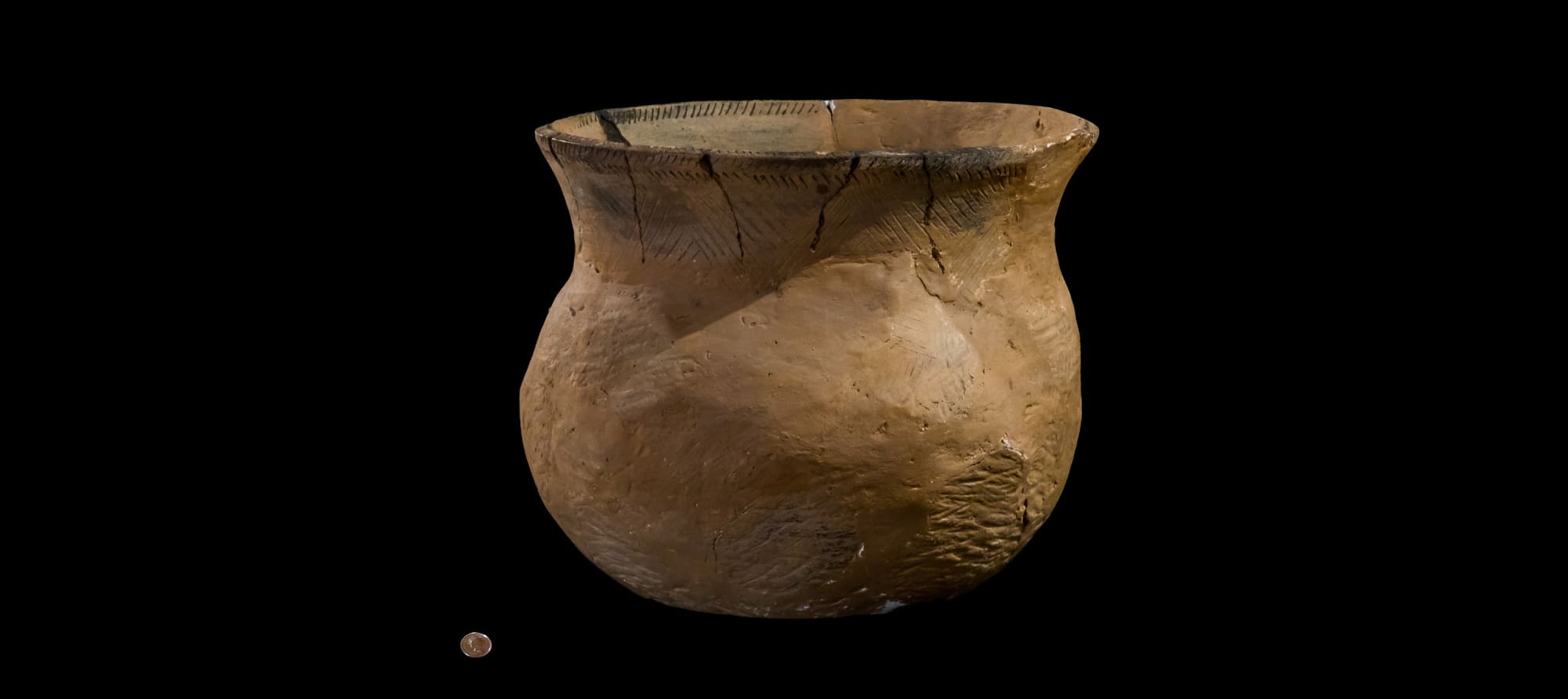
Pottery Jar - L988.D.010.719
A round clay kettle with a fluted opening, and hatch-marked decoration. The kettle is largely reconstructed. Natural clay colour. Part of the James Morden Collection containing a high volume of items of Indigenous origin. The kettle is said to be from the Hicks Farm in Norwich, Oxford County, Ontario. A note is written, “of an entire specimen broken by…plough…1907.” The kettle is 28 cm high and 32 cm in diameter.
There is a Haudenosaunee story that humans were made from clay. Clay is the living flesh of Mother Earth and cooking containers, storage vessels like this ceramic jar, smoking pipes, and gaming pieces were all made from clay. Bits of broken shells were added to temper the clay to make it harder when it was cooked in a hot fire. Designs were engraved into the drying clay after the pot was formed. While this pot is not ornately decorated, the lines and dents scratched into the surface with a stick, bone, or antler provide two functions. The finished pot would be less slippery and easier to grasp, and the surface patterns enhanced the overall visual impact of the work. Despite the best of care, such pots were easily broken and bits of ceramics, called shards, have been found all across Haudenosaunee country in New York, Vermont, Pennsylvania. Ohio, Quebec, and Ontario. This pot has been reconstructed based upon pieces that were actually found in the ground. The pot has a unique curved bottom in order to place it directly in hot coals. A rope could also be attached to the top rim to suspend the pot over a fire, with the curved bottom distributing the heat more effectively.
 Pottery Shards
Pottery Shards